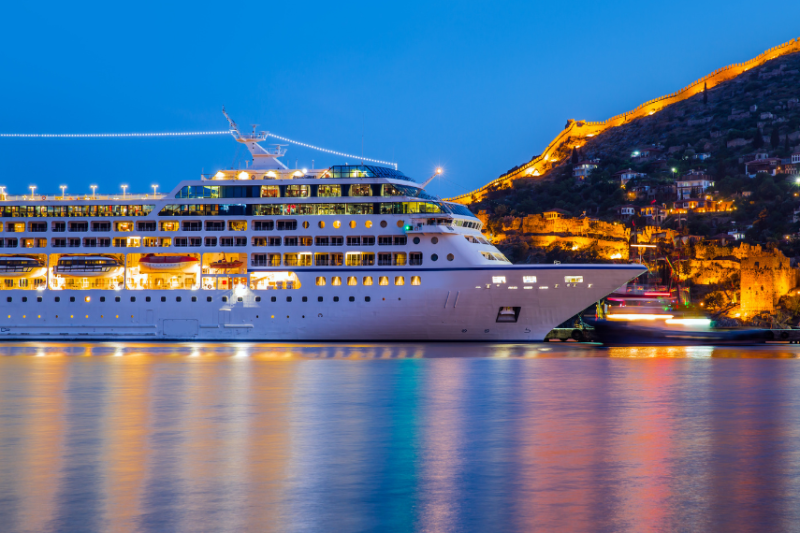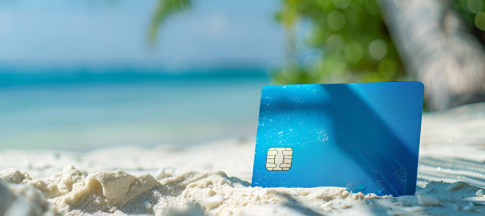
Whether it’s destination-hopping or sailing across the Atlantic, cruises are a super popular type of holiday.
Follow our first-time cruise tips if you’re going to be sailing the seas soon and want to be prepared.
What do I need to pack for a cruise?
Cruises are fairly similar to your typical hotel holiday when it comes to packing.
Remember your essentials, including:
- your passport
- any tickets or boarding passes you need
- important medication
- any extra documents you need to enter certain countries (like an ESTA)
- toiletries like shampoo, shower gel and deodorant
- clothes and footwear – check out more about that below
- your travel insurance documents
If you’re doing a destination-hopping cruise, you may need to pack different things for different locations.
Make sure you check the weather forecast for wherever you’re heading so you don’t get caught out.
Find out more in our in-depth guide on what to pack and wear for a cruise.
Luggage allowances
Like planes, cruise ships have luggage limits that you need to follow.
Always check your booking or your cruise carrier’s website to see what the luggage limits are before you start packing.
You can usually take a carry-on bag when you board your cruise.
Sometimes, it can take a few hours for your luggage to be delivered to your room, so it’s worth having a bag with you with some of your essentials, like
- a phone charger
- sun cream
- a reusable water bottle
- payment cards
What clothes to pack
The kind of clothes you pack for a cruise depends on when and where you’re going.
For example, packing for a summer Caribbean cruise will be very different to packing for a European tour in winter!
But no matter where you’re going, make sure you pack:
- comfortable shoes for walking
- a waterproof coat in case it rains
- enough socks and underwear for your whole trip
Packing for a summer cruise
For a summer cruise, you should bring:
- t-shirts
- shorts or skirts
- sandals or flip flops
- swimwear
- sunglasses
Packing for an autumn or winter cruise
If you’re taking a cruise in cooler climates, you should pack:
- warm underlayers
- a hat and scarf
- waterproof shoes
- a warm, waterproof coat
- an umbrella for when you’re on land
Cruise must-haves
Once you’ve got all your essentials packed, there are a few extra things to bring along that can be useful on a cruise:
- a reusable water bottle – so you don’t have to buy bottles of water on the ship or on land
- earplugs – in case your cabin isn’t soundproof!
- a large tote or beach bag – giving you plenty of room to pack your essentials if you’re heading off-ship
- an international adaptor – if you need to do any device charging off-ship
Try to avoid waiting until you’re onboard to buy things like chargers, sunglasses and other essentials.
These can be much pricier than they would be at a regular shop, so bring your own where you can.
Safety tips for cruises
Unfortunately, both accidents and crimes still happen on cruise ships – and can sometimes be even more dangerous than on land. There’s a few reasons for that:
People can fall off ships if it’s dark, the railing isn’t secured, or they slip.
Unsecured things like chairs and ornaments can fall or slide across rooms on choppy seas, which can end in injuries!
Some criminals target cruises as they have lots of unsuspecting people in one place.
If the crime happens while the cruise is in international waters, it can be harder to investigate.
Cruises usually don’t have any police on board (though they often have security teams).
Because of this, it’s important that you make your safety a priority. Here’s how.
Secure your room
Make sure your cabin door locks properly and keep any valuable items well-hidden or in a safe if one’s available. This includes things like your passport, gadgets, money and jewellery.
Try to keep sharp or easily breakable objects in drawers or luggage so they don’t fall over if the ship runs into choppy waters.
Learn the ship’s layout and muster stations
It’s important to be familiar with a cruise ship’s layout so you know:
- where to go in an emergency
- where the medical bay is
- how to get back to your room
The back of your cabin door should have a basic layout of the ship, so you know where the most important areas are. If it doesn’t, ask a member of staff to give you one.
Most cruise ships will also have maps and direction signs in public areas so you can get around more easily.
Make sure you listen to any safety instructions or drill run-throughs, so you know what to do if something goes wrong onboard.
Know where your loved ones are
If you’re taking a cruise with friends or family, make sure you’ve agreed on a few meeting points in case someone gets lost.
It might also be worth putting together a schedule, so everyone knows where they’re going at what time.
Be careful around railings
Whether it’s a stairway inside or the railing at the side of the ship, always take care in these spots.
Keep kids away from railings where you can – and never let them climb or stand on them.
It’s best to steer clear of the ship’s side railings altogether at night, as you can’t see that well and it’s easier to trip and fall.
Look after your valuables
When you’re away from your cabin, make sure you’re carrying any valuables safely in a closed bag or zipped pocket.
Don’t leave your bag anywhere unattended and only leave it with people you trust.
If you’re going solo to the pool or somewhere that you can’t take your bag, either leave it in your cabin or use lockers if they have them.
Tips for when you’re on land
If you’re stopping off at a few destinations on your cruise, here are a few things to keep in mind.
Make the most of your time
Because you'll likely only be spending the day or a few hours at your stop-off points, it’s important to plan your time on land so you can make the most of things.
Before you get to your next stop-off point, do some research around the best sights to see, popular restaurants and so on. Getting a plan together of what you want to do will help you absorb the culture.
Be wary of scammers or pickpockets
Unfortunately, places that are popular with tourists can sometimes be targeted by scammers – especially if there are big, busy crowds.
If something of yours is stolen, make sure you get a police report. If you don’t have time to do this before boarding again, get a written report from your cruise company.
If you’re travelling with kids, keep them close-by in areas like this.
It’s a good idea to just be aware of the risk, so you can keep an eye out and stay safe.
Know when you’re leaving
It’s more common than you think for people to miss their cruise departure time!
Make sure you know exactly when the ship is set to move onto the next spot and be sure you’re back onboard by that time.
Stick to a budget
If you’re taking an all-inclusive cruise and are travelling on a budget, keep that in mind when exploring a destination.
To save money, you could try to save your meals or drinks for back on the ship, where it’s included in your cruise package!
Can I get travel insurance for a cruise?
Yes. A lot of travel insurers offer cruise cover, but it’s often an add-on to a travel policy.
We offer a cruise cover add-on for travel insurance, which you can learn more about on our cruise cover page. You need to add this on to your policy to be covered for a trip that involves a cruise.
Adding this means you'll have standard travel cover and cover for things like:
- missed cruise departures
- being confined to your cabin for medical reasons
- cruise interruption for medical reasons
As with any kind of insurance, policy limits and exclusions apply here.
If you’ve already got travel cover with us, remember to add cruise cover to your travel insurance as soon as you book your cruise. This will make sure you’re covered for any unexpected cancellation.


